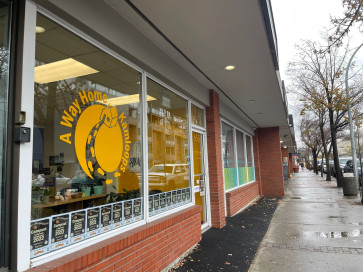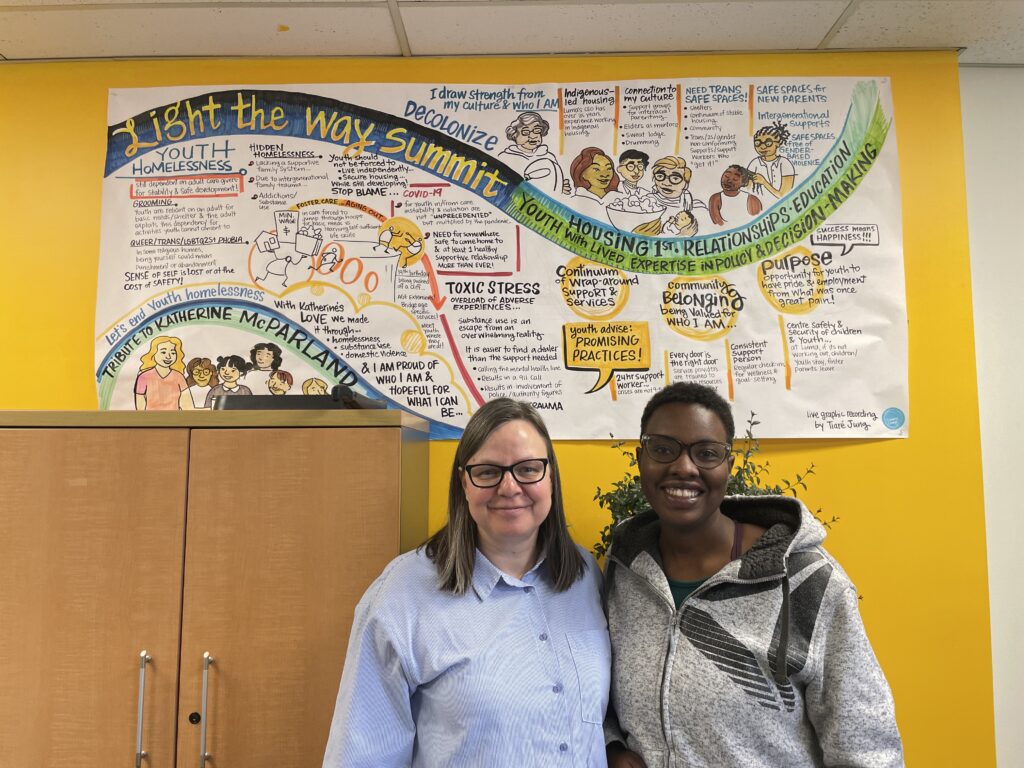A Way Home Kamloops
Category: Supportive Housing | Author(s): Maryam Soroorpour and Valeria Molina

Image Credit: Maryam Soroorpour
Location Address: A Way Home Kamloops, 653 Victoria St, Kamloops, BC, Canada
Subject
A Way Home Kamloops is a charitable nonprofit organization which aims to support and end youth homelessness. The organization strives to empower youth through support, prevention, education, and housing, providing services to youth at risk of or experiencing homelessness. A Way Home Kamloops provides various housing options and operates from a “Youth Housing First” philosophy. One of their current programs is known as ‘Safe Suites’, which provides 24/7 on-site support to young people between the ages of 18 to 25 who have complex mental health and/or substance use concerns and are transitioning from the streets to safe housing. Likewise, their Youth Housing First Program, which targets people aged between 16 to 26 who are at risk of or experiencing homelessness, provides a continuum of housing options in scattered site locations in which units are rented out for youth to live there independently with regular support from case managers.
Crisis
Youth struggling with addictions are one of the most vulnerable populations that have limited access to affordable supportive housing options in Kamloops. As outlined in Kamloops’ 2020 Housing Needs Assessment, when dealing with supportive housing for vulnerable people, youth are often being sent to other communities because supports are unavailable in the city. Additionally, the report indicated that there are “approximately 50 youth on the Kamloops Youth Housing First Wrapforce centralized waiting list” (p. 45), which increases the likelihood of youth at risk to relapse while they wait for housing. As noted by A Way Home Kamloops’ Executive Director Tangie Genshorek, the waitlist is currently about 72 youth, highlighting a drastic increase in the past two years.
The problem is further exacerbated due to the occupancy rates, as Genshorek mentioned. Currently, A Way Home Kamloops has only 6 beds offered by their Safe Suites Housing Program and an additional 26 beds in scattered sites locations offered by their Youth Housing First Program. This total of 32 beds represents a huge gap between the number of vulnerable youth and in the number of units available for them, indicating a need for increasing supportive housing options that provide proper resources and experienced staff to manage youths’ addictions and/or mental health concerns.
A Way Home Kamloops is currently undergoing a project with BC Housing that seeks to alleviate some of those concerns. Katherine’s Place, named after the organization’s founder Katherine McParkland, will have 39 new units for youth ages 19 to 26 who are currently experiencing homelessness. Such supportive housing will have staff on site and provide youth with counseling, community services, life skills training as well as education and health support. While the crisis won’t be solved by this, the new building will provide youth at risk with a safe place to live and further become independent, paving the way towards addressing youth housing needs.
Additionally, Genshorek explained that part of the crisis in Kamloops is also vastly related to the absence of housing with no barriers for those youth who are entrenched in their drug use and might not be ready to talk about their trauma or what kind of supports they need. As she mentioned, “Half of them [youth in the waitlist] we cannot house in any of our housing because they cannot partake in the programming that we offer, and there’s no one in town that has appropriate housing and supports for those youth”. This represents a need for housing in Kamloops that, as she expressed, “can meet the youth where they are at”.
Video Credit: Maryam Soroorpour and Valeria Molina. Interviewee- Tangie Genshorek
Community Implications
Given that youth will become the leaders of tomorrow, it becomes increasingly important to tackle the root of their traumas and addictions at this age to prevent it from reocurring in the future and provide them the opportunity to reach their full potential as contributing members of society. Due to lack of support and additional mental health concerns youth face in this situation, many tend to drop out of school, while others are unable to sustain a job, as A Way Home Kamloops’ Housing Coordinator Moira Umwali explained. Such issue might have negative consequences for the city’s economy in the long-term as the number of laborers decreases. Likewise, without the adequate assistance and structure that characterizes supportive housing, vulnerable youth will have a harder time starting their rehabilitation process, further hindering their reincorporation into the community.
Additionally, the growing number of youth who are homeless represents a high cost for the city, heavily taxing on the system in place. As Genshorek also explained, it costs billions of dollars to keep people on the streets, in and out of shelters, jail, the emergency room, etc. When dealing with youth, such an issue becomes even worse since they could be homeless for longer if they don’t get proper assistance soon. “If people don’t have a lot of empathy for people with trauma, then they can think about the financial bottom line” expressed the Executive Director of A Way Home Kamloops.
Click or press on images to expand.
A Way Forward
We recognize that no one suggestion will solve the housing crisis in Kamloops, but based on our research, here are some ideas that may help move us even slightly forward.
Not only would this crisis benefit from having more buildings dedicated to supportive housing, but rather there needs to be an increasing number of staff available to work closely with the youth. As Genshorek expressed, “It’s not just about getting more units, we need the supports in place, we need to scale up the staffing in relation to the units”. Hence, ongoing funding for intensive staffing is key to providing increasing support to youth in vulnerable situations.
Additionally, she explained that one of the biggest issues in relation to housing and substance use is the need for safe supply. Genshorek acknowledged the work the City of Kamloops is doing and expressed that they should continue to put their voice behind the cause and demand for safe supply. Taking such step can not only prevent people from drug dying but it can also help reduce the stigma associated with drug use, which often leads to a cycle of shame and self-hatred that makes it hard for youth to see a path out and make any goals. “If they [youth] understand that people understand why they are medicating for the trauma, I think that would make a huge difference” expressed Genshorek.


